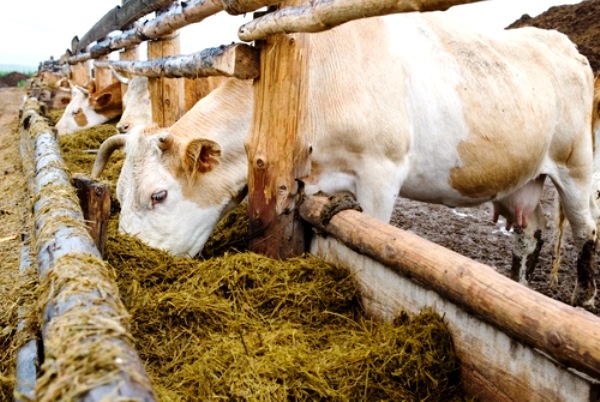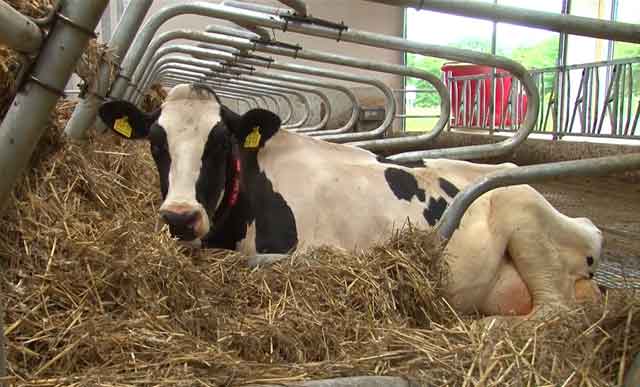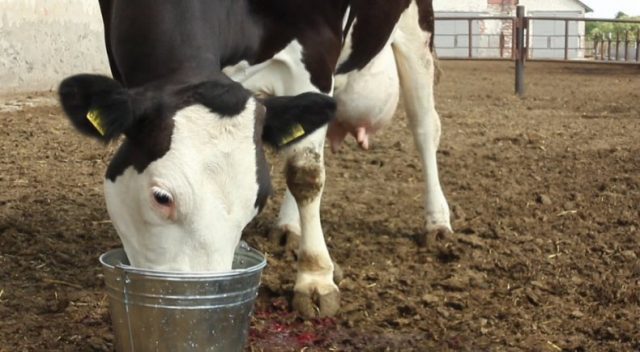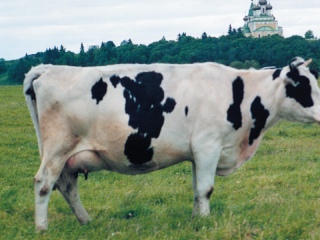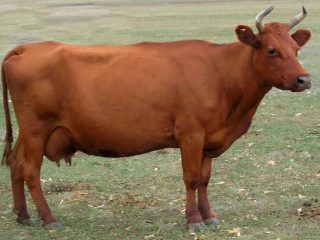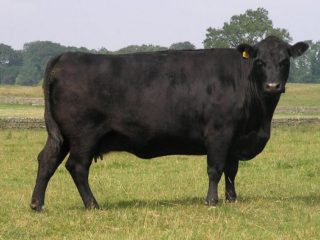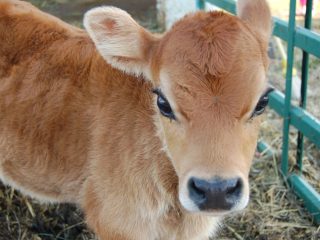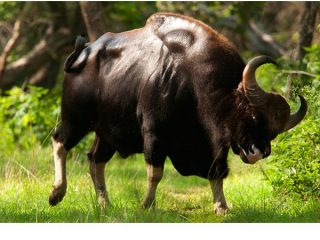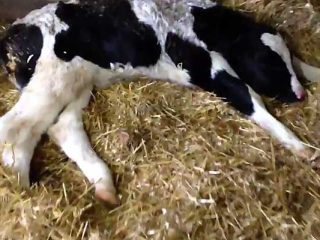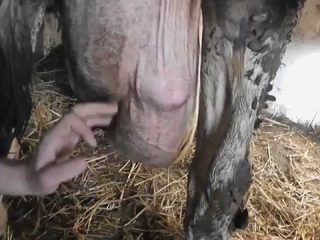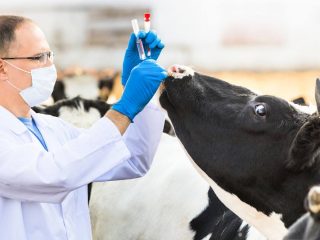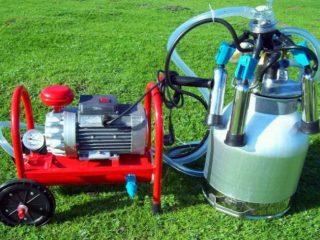Content
- 1 What is atony of the forestomach in cattle?
- 2 Forms of the disease
- 3 Causes of hypotension of the forestomach in cattle
- 4 Symptoms of cattle rumen hypotension
- 5 Course of the disease
- 6 Diagnosis of forestomach atony in cows
- 7 Treatment of atony of the forestomach in cattle
- 8 Forecast
- 9 Preventive measures
- 10 Reviews on the treatment of forestomach atony in cows
- 11 Conclusion
Treatment of proventriculus atony in a cow proceeds quickly and without consequences, but only if the disease is diagnosed in a timely manner. In the later stages of development, ruminal atony in cattle is accompanied by intestinal obstruction, which can lead to the death of animals from exhaustion.
The disease is classified as seasonal - the peak incidence of rumen atony occurs in spring and autumn. The risk group is primarily cows, followed by goats.
What is atony of the forestomach in cattle?
Rumen atony in a cow is a disease of the digestive organs, which is expressed in weakening the tone of the proventriculus muscles. This causes them to stop contracting and cause stagnation of undigested food. If treatment is not started promptly, the cow will starve and may eventually die from exhaustion.
Forms of the disease
It is customary to distinguish 2 forms of rumen atony in cows, which differ from each other only in the factors of occurrence:
- The primary form of atony of the proventriculus develops as a result of disruption of the digestive organs, caused by gross errors in the organization of animal feeding, lack of walking in the winter and insufficient water consumption.
- A secondary form of the disease can occur if any pathologies develop in other organs not related to digestion. For example, rumen atony is provoked by metabolic disorders, vitamin deficiency, kidney and liver dysfunction, as well as severe infections.
Causes of hypotension of the forestomach in cattle
Atony of the forestomach in a cow can occur for a number of reasons, which include:
- Irregularity of feeding, when fasting alternates with intensive feeding of animals.
- Feeding cattle with heavy feed (straw) or low quality hay (musty, rotting, damp). This also includes cheap concentrates.
- Inclusion of spoiled foods into the diet of cows: feed that has passed its expiration date, moldy vegetables, sprouted or rotting potatoes.
- Drastic changes in the diet of cows. Atony of the proventriculus in cows in most cases develops in September-October, when the herd switches from fresh feed on pastures to compound feed.
- Dirty stagnant water or lack of it. An additional factor in the development of rumen atony is the supply of cold water to animals. It is recommended to warm it up at least a little.
- Uniformity of feeding. You cannot feed animals only with combined feeds. A complete diet for cows involves feeding them succulent feed.
- Infection with parasites or intestinal infections entering the animal's body.
- Stagnation of livestock. If you do not walk cows in winter, the likelihood of developing rumen atony increases significantly.
- Driving livestock over long distances during the summer months.
- Excess industrial noise.
Symptoms of cattle rumen hypotension
Symptoms of proventriculus atony in a cow include the following signs:
- complete or partial cessation of lactation;
- the animal refuses food;
- behavior becomes sluggish, apathetic;
- heat;
- rapid weight loss;
- the cow begins to lay low;
- belching stops;
- a compaction forms in the scar;
- the rumen muscles do not contract;
- animal feces are too dense;
- the animal stops defecating;
- diarrhea;
- lack of chewing gum.
The normal number of rumen contractions in a cow before consuming feed is 2-3 times within 2 minutes. After eating, this figure increases to 4-5 times in 2 minutes. With atony of the proventriculus, the scar contracts only once at the beginning of the disease; in the later stages, the contraction disappears completely.
Course of the disease
The medical history of rumen hypotension in cattle suggests the following changes in the animal’s body:
- Oxidation of swallowed food in the rumen cavity provokes pathological processes in the digestive system.
- The ratio of fatty acids is disrupted.
- The number of microorganisms in the rumen decreases. As a result, the digestion of fiber in food slows down.
- 2-3 hours after ingesting low-quality food or a spoiled product, ciliated ciliates begin to divide.
- On the 2nd day, the ciliates begin to encyst.
- The high concentration of toxins in the stomach kills these microorganisms.
- Toxic products, when absorbed in the intestines, begin to depress the animal’s nervous system, which causes food refusal and cessation of chewing.
- Interstitial exchange is disrupted.
- The reserve alkalinity of the blood decreases.
Diagnosis of forestomach atony in cows
The history of the disease in most cows with rumen atony begins with the fact that the animal lays low and stops regurgitating food. The occurrence of these symptoms is a good reason to call a veterinarian. Before doing this, you can feel the cow's belly. In the case of atony of the proventriculus in animals, a thickening of the scar is clearly felt.
When making a diagnosis, there is always a risk that atony may be confused with an animal injury. In particular, the doctor must rule out the presence of traumatic reticulitis in the cow before making a final verdict.
Also, the absence of contractions of the forestomach can be caused by damage to the walls of the esophagus and the forestomach itself. This occurs when a cow swallows a sharp foreign object. As with rumen atony, food stops being digested.
Treatment of atony of the forestomach in cattle
At the first signs of the disease, it is recommended to consult a specialist. An examination by a veterinarian and subsequent consultation on further treatment regimens significantly increase the animal’s chances of recovery. When independently choosing treatment methods, errors may occur in determining the dosages of medications and violation of the recommended diet.
A set of measures to combat rumen atony is aimed at solving the following problems:
- normalization of forestomach secretion;
- restoration of motor functions of the rumen muscles;
- stopping the rotting of food in the forestomach;
- elimination of intoxication processes.
The general treatment plan for scar atony is as follows:
- The amount of food on the 1st day of treatment is reduced to a minimum or the food supply is stopped altogether. At the same time, they continue to give water to the cows. It is recommended to add table salt to it at the rate of 10 g per 10 liters of water.
- On the 2nd day, the animals are fed some greens, vegetables or high quality hay.
- On the 3rd day they start feeding combined feeds.
- For a speedy recovery, you can add medicinal mash, which is made from Glauber's salt, to the food. 150 g of the substance is diluted in 1 liter of water and 450-700 g of vegetable oil.
- From time to time, the scar area is massaged with a fist. Massage frequency: 4 times a day for 10-12 minutes.
- When the disease starts, physiotherapeutic measures are carried out, agreed with the veterinarian.
In addition to adjusting the cows' diet, it is also necessary to select medications to treat sick animals. They are prescribed by a veterinarian.
Most often, the following drugs are prescribed for ruminal atony:
- "Prozerin." Treatment is combined with the introduction of a special yeast solution into the animal’s diet.To do this, 100 g of yeast is mixed with 200 g of sugar and diluted in 1 liter of water, followed by the addition of ethyl alcohol (no more than 45-50 ml). The solution is given to cows once a day every 2 days.
- In case of severe intoxication, cows are given injections of magnesium and glucose.
- Fermentation in the digestive organs is stopped using a solution of “Ichthyol” in a proportion of 15 ml per 1 liter of water. Frequency of use: 2 times a day, every day. You can also use Protosubtilin.
- The acid balance is corrected with lactic acid. To do this, dilute 30-70 ml of the substance in 1 liter of water. The mixture is given to sick cows every 2 days.
Traditional methods of treatment include the use of solutions and infusions of medicinal herbs. These include the following plants:
- Hellebore normalizes intestinal function. The grass is infused and the sick animal is given water for 2-3 days.
- Wormwood improves appetite. The infusion is given to cows 2 times a day, 15 g each.
- Cucumber pickle. The recommended daily intake is 300-400 ml.
Forecast
The chances of recovery from gastric atony in a cow are quite high. The prognosis for treatment success is especially favorable if the disease is diagnosed on time - in the early stages the animal recovers in a matter of days.
If atony of the forestomach causes complications in the form of inflammation of the abomasum and intestines, and the book is full, treatment is delayed for 1-2 weeks. If the disease is detected in the later stages of development, it may become chronic.
Preventive measures
In order to prevent the occurrence of atony of the proventriculus in a cow, it is necessary to properly organize the feeding of the animal.In addition, it is important to adhere to general recommendations for caring for cattle, therefore the prevention of proventriculus atony includes the following set of measures:
- Cows should drink clean, fresh water. In stagnant water, into which foreign objects or food particles have entered, harmful microorganisms will soon develop. When ingested by a cow, they provoke the development of atony of the proventriculus.
- The selection of feed for feeding animals must be carried out carefully. Under no circumstances should cattle be fed musty hay, straw, rotting root crops, sprouted potatoes or moldy greens. Of course, providing cows with high-quality food is expensive, however, the costs of treatment after the development of atony will be even higher.
- The transfer of animals from one type of food to another is carried out gradually. Sudden changes in diet lead not only to atony, but also to general disturbances in the gastrointestinal tract.
- Cattle are fed in a standardized manner, taking into account recommended dosages and frequency, which are calculated based on the age of the animals. Fasting, even short-term, followed by increased feeding, designed to compensate for hungry days, has a particularly negative effect on the health of cows.
- Rough feed is given to animals only after preliminary steaming or mixing with succulent feed.
- During the winter months, it is recommended to let the cows outside for a walk at least 1-2 times a week. A 2-hour warm-up is enough to reduce the risk of developing atony.
You can learn more about the treatment of scar atony from the video below:
Reviews on the treatment of forestomach atony in cows
Conclusion
Treatment of proventriculus atony in cows is successful in most cases. The most important thing is to diagnose the disease in time, since in the early stages the chances of recovery are much higher. If treatment is delayed, atony of the cow's forestomach can lead to the death of the animal.
